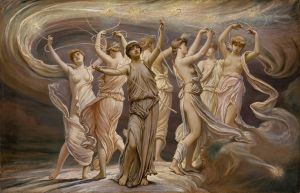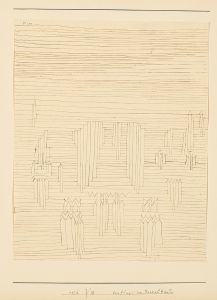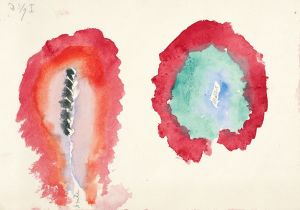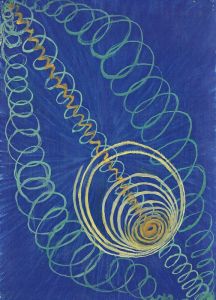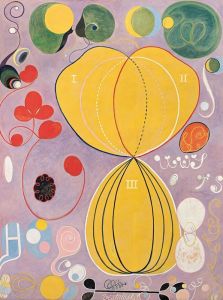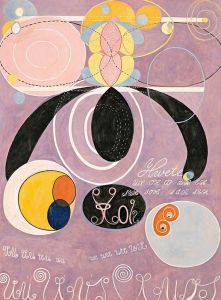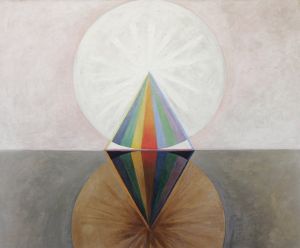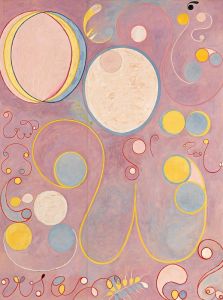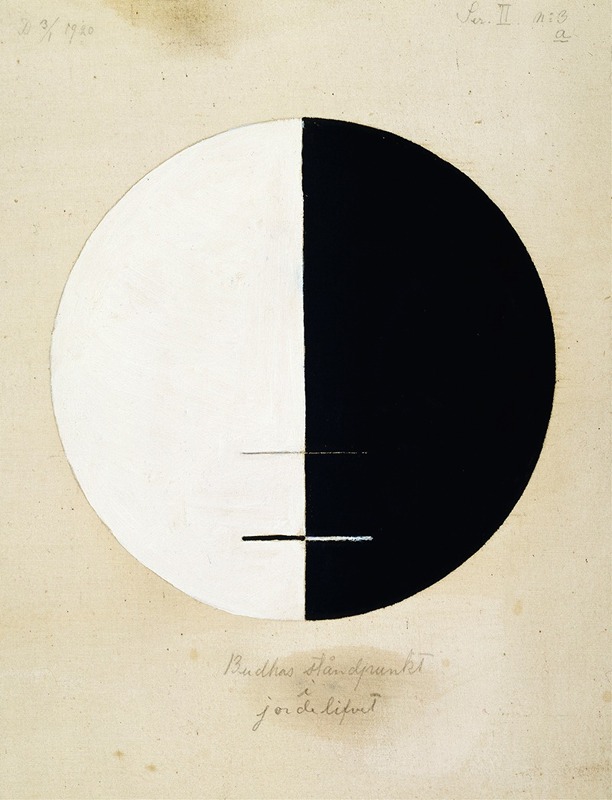
Buddhas Standpoint in the Earthly Life No. 3
A hand-painted replica of Hilma af Klint’s masterpiece Buddhas Standpoint in the Earthly Life No. 3, meticulously crafted by professional artists to capture the true essence of the original. Each piece is created with museum-quality canvas and rare mineral pigments, carefully painted by experienced artists with delicate brushstrokes and rich, layered colors to perfectly recreate the texture of the original artwork. Unlike machine-printed reproductions, this hand-painted version brings the painting to life, infused with the artist’s emotions and skill in every stroke. Whether for personal collection or home decoration, it instantly elevates the artistic atmosphere of any space.
Hilma af Klint was a pioneering Swedish artist and mystic whose work is now considered among the first examples of abstract art. Her painting "Buddhas Standpoint in the Earthly Life No. 3" is part of a larger series that reflects her interest in spirituality, theosophy, and the exploration of the unseen dimensions of life. Af Klint's work was largely unrecognized during her lifetime, as she believed the world was not ready to understand her art. It wasn't until decades after her death that her contributions to abstract art were fully acknowledged.
"Buddhas Standpoint in the Earthly Life No. 3" is one of the many pieces that af Klint created as part of her spiritual and artistic journey. Her work is characterized by the use of vibrant colors, geometric shapes, and symbolic imagery, which she believed were guided by higher spiritual forces. Af Klint was deeply influenced by her involvement with spiritualist movements and her interest in theosophy, a religious movement that sought to understand the mysteries of the universe and the bonds that unite the universe, humanity, and the divine.
The painting is part of a series that explores the intersection of the spiritual and material worlds. Af Klint's art often sought to convey messages from the spiritual realm, and she considered herself a medium through which these messages could be communicated. Her work was not intended for public exhibition during her lifetime, as she felt that the world was not yet prepared to understand the spiritual dimensions of her art.
Af Klint's paintings are notable for their departure from traditional artistic conventions of the time. While many of her contemporaries were focused on representational art, af Klint's work was abstract and symbolic. Her use of color and form was intended to evoke spiritual concepts and to transcend the material world. This approach was revolutionary and set the stage for later developments in abstract art.
The series to which "Buddhas Standpoint in the Earthly Life No. 3" belongs reflects af Klint's belief in the interconnectedness of all things and the presence of a higher spiritual order. Her work often incorporates motifs such as spirals, circles, and other geometric shapes, which she believed represented the structure of the universe and the spiritual forces that govern it.
Hilma af Klint's legacy is significant in the history of art, as she was one of the first artists to explore abstraction as a means of expressing spiritual ideas. Her work challenges the traditional narrative of the development of abstract art, which has often focused on male artists such as Wassily Kandinsky and Piet Mondrian. Today, af Klint is celebrated as a visionary artist whose work continues to inspire and intrigue audiences around the world.
In recent years, there has been a resurgence of interest in af Klint's work, with major exhibitions and retrospectives bringing her art to a wider audience. Her paintings are now recognized for their innovative approach and their profound exploration of the spiritual dimensions of life. "Buddhas Standpoint in the Earthly Life No. 3" is a testament to af Klint's unique vision and her enduring influence on the world of art.





